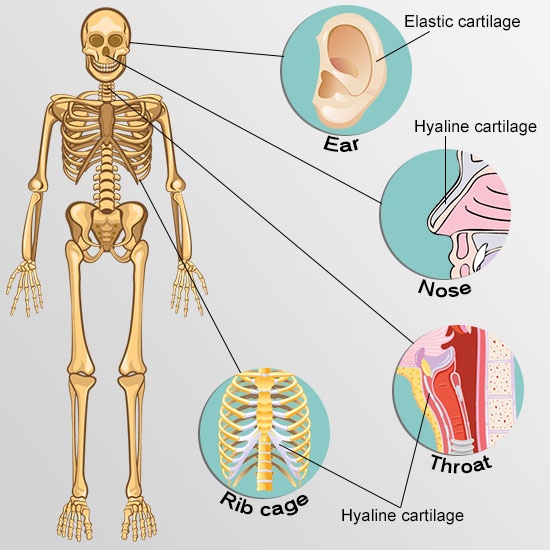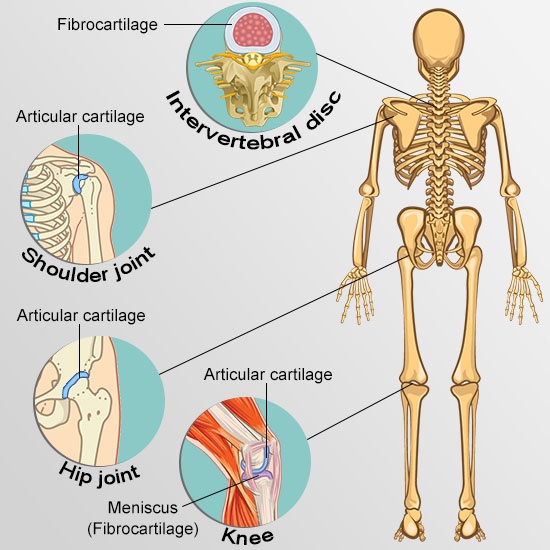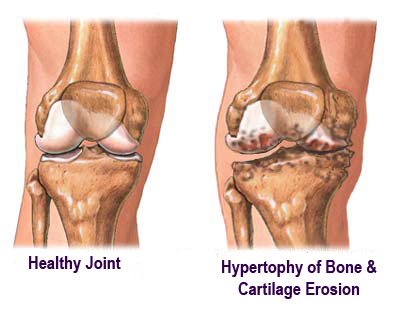 New Health Guide
New Health Guide
Cartilages are tough, flexible tissues found in many parts of the body. They serve two main functions: to act as shock absorbers and as molds that provide structure.
Some cartilages cover joint surfaces and enable bones to slide against one another with minimal friction, thus preventing damage. They also support your weight and protect your bones as you bend, stretch, or run. Other tough, flexible tissues are also ideal for serving as specially shaped molds for curved body parts and to support the bones.
The three main types of cartilage are:


These cartilages can be damaged in different ways. For example, the external ear cartilage can be damaged by a blow to the ear, which can make it look deformed ("cauliflower ear"). The cartilages between the vertebral discs in your spine can also be damaged, resulting in slipped disc, which is a common age-related problem. Cartilages found in joints like the knee are often damaged from accidents, injuries, or normal wear-and-tear.
Damage to the articular cartilage can be managed through cartilage regeneration, which is the main focus of this article.
Damage to the articular cartilage is a very common and potentially serious type of injury, which usually affects the knee joints. Cartilage damage can result in severe pain, inflammation and loss of mobility.
Articular cartilage damage can occur in different ways:

No, it doesn't. Unfortunately, unlike other tissues, cartilage does not regrow by itself because it does not have blood vessels to supply blood circulation. Blood cells are important to help repair damaged tissues, so if a cartilage is damaged, it cannot heal quickly like damaged skin. In other words, natural cartilage regeneration does not occur.It is, therefore, really critical to make sure that the amount of cartilage loss after an injury is minimized to overcome the challenges when dealing with strategies to repair cartilages.
Research has been done to restore damaged joint cartilages through cartilage regeneration.So far, techniques for this procedure are still in the experimental stage in theUnited States, although it is now being done in Europe. Current approaches include:
Surgeons now use microfracture surgery, a technique to promote growth of new cartilage. This type of surgery is usually done in young adults who sustain a tear in the knee joint cartilage after a sports injury. It is not effective in elderly patients with osteoarthritis or generalized cartilage degeneration.
How it's done: Microfracture surgery involves drilling of tiny holes into the bone below a damaged cartilage. This releases blood cells and stem cells into the space where the damaged cartilage is found. This results in a super clot that provides a rich environment of cells that promote cartilage regeneration.
Effects and side effects: Only half of microfracture surgeries are successful after a long period. The main issue with this technique is that the super clot produces fibrocartilage, which is a mixture of hyaline cartilage and scar-like tissue. Unlike the original hyaline cartilage which was damaged, fibrocartilage is tough, dense and unable to function well as a cushion between joints. In addition, microfractures can also stimulate bone production, which can infiltrate the regenerating cartilage and disrupt its function.
All of these cartilage regeneration procedures have mixed results. Many questions still plague attempts to regenerate cartilage. More research is needed to develop procedures that can relieve arthritis and produce durable replacements for damaged cartilages.
According to the University of Washington Orthopedics and Sports Medicine, vitamins included as part of your diet can promote your body to mend itself. However, it is always a good idea to consult your doctor first before starting any supplements. The vitamins that may be helpful include: